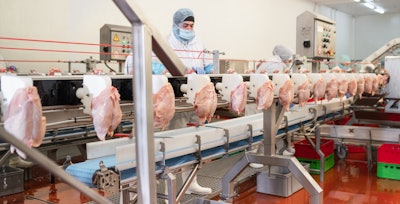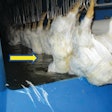
Poultry processing facilities pose several challenges during the decontamination process. However, proper sanitation is crucial to maintaining food safety.
“From a human safety perspective, whenever you bring in a raw product which inherently has bacteria, viruses and other contaminants into a facility and these products are then processed, cross-contamination is a major risk to consumer health,” Gareth Lloyd-Jones, CEO, Ecowize, explained.
Lloyd-Jones shared three steps to simpler decontamination.
1. Choose processing equipment that is designed to be easily cleaned
“In reality, a lot of processing equipment has been designed to process effectively and efficiently and productively, not necessarily designed specifically to be cleaned well and sanitized,” Lloyd-Jones said. “At the end of the day, there’s opportunities to figure out how do we make it easier, better, quicker, faster, not just in terms of productivity, but at the same time improves food safety.”
For example, while many processing facilities are thinking about automation to streamline operations, they should also think about investing in redesigned equipment that is designed to be easy to dismantle for cleaning. This improves food safety and minimizes the risk that E. coli, Listeria, Salmonella and other dangerous pathogens are missed during the decontamination process.
2. Find ways to reduce water, labor during decontamination
Labor is a major challenge for the poultry industry. At the same time, finding ways to reduce water usage during the decontamination process is also important. These needs can conflict with the demand of ensuring that the process is properly decontaminated.
“Those components are fighting each other,” added Lloyed-Jones. “But the big picture is consumer health.”
Automating some of the decontamination processes could help, but it’s important to figure out a solution that correctly balances the needs of your facility.
3. Make sure to invest in your facility
Making regular investments in your poultry processing facility – from both a design and a maintenance standpoint – is crucial to proper decontamination, Lloyed-Jones explained.
Drains that don’t drain, rust, holes in the wall and improperly placed equipment all make the cleaning process more challenging, increase human error and can have major implications for food safety.



















